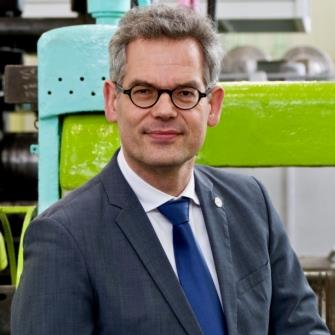Advances in Physical Metallurgy
A special issue of Metals (ISSN 2075-4701).
Deadline for manuscript submissions: closed (30 June 2021) | Viewed by 12446
Special Issue Editors
Interests: physical metallurgy; computational alloy thermodynamics and kinetics; ICME; alloy and process design; metastable austenite in steels; TRIP effects in steels
Special Issues, Collections and Topics in MDPI journals
Interests: ICME—numerical material and process modeling for metallic materials; production processes (forming and heat treatment) for modern steels; development of alloy concepts and process technologies for the nanostructuring of structures as well as for the adjustment of metastable micro-structural phases; combination of experimental laboratory techniques with numerical simulation to model, evaluate and optimize industrial forming and heat treatment processes; forming technology
Special Issues, Collections and Topics in MDPI journals
Special Issue Information
Dear Colleagues,
Although Physical Metallurgy is considered a mature scientific field, spanning more than 200 years of scientific research, the discovery of new alloys, new processing technologies and new characterization techniques make a special issue on “Advances in Physical Metallurgy” a necessary initiative. Important advances have been achieved in the development of new alloys, such as the high entropy alloys (HEA), high-temperature intermetallics, advanced high-strength steels, the development of novel processes, such as additive manufacturing (AM), and the development of modern characterization techniques, such as EBSD tomography and atom probe tomography.
The special issue “Advances in Physical Metallurgy” welcomes research papers and reviews including but not limited to advanced processes and manufacturing of metallic materials, advanced characterization techniques for microstructure and properties in multiple scales, novel alloying concepts and alloy design based on ICME approaches, structural metallic alloys, light metal alloys, high-temperature alloys, corrosion resistant alloys, high-entropy alloys, metal-matrix composites, shape-memory alloys and functional materials, advanced simulation and modeling for microstructure evolution and property description, theoretical advances in computational alloy thermodynamics and kinetics as well as phase equilibria and diffusion.
Prof. Dr. Gregory N. Haidemenopoulos
Prof. Dr. Ulrich Prahl
Guest Editors
Manuscript Submission Information
Manuscripts should be submitted online at www.mdpi.com by registering and logging in to this website. Once you are registered, click here to go to the submission form. Manuscripts can be submitted until the deadline. All submissions that pass pre-check are peer-reviewed. Accepted papers will be published continuously in the journal (as soon as accepted) and will be listed together on the special issue website. Research articles, review articles as well as short communications are invited. For planned papers, a title and short abstract (about 100 words) can be sent to the Editorial Office for announcement on this website.
Submitted manuscripts should not have been published previously, nor be under consideration for publication elsewhere (except conference proceedings papers). All manuscripts are thoroughly refereed through a single-blind peer-review process. A guide for authors and other relevant information for submission of manuscripts is available on the Instructions for Authors page. Metals is an international peer-reviewed open access monthly journal published by MDPI.
Please visit the Instructions for Authors page before submitting a manuscript. The Article Processing Charge (APC) for publication in this open access journal is 2600 CHF (Swiss Francs). Submitted papers should be well formatted and use good English. Authors may use MDPI's English editing service prior to publication or during author revisions.
Keywords
- Additive manufacturing of metallic components
- Severe plastic deformation processing
- Welding and joining technologies
- Advanced metallic glasses
- High entropy alloys
- Advanced high strength steels
- Lightweight alloys
- Advanced characterization techniques
- Advanced mechanical testing of metals
- Microstructural simulation
- Alloy and process design based on ICME approaches
- Mechanical behavior and embrittlement
Benefits of Publishing in a Special Issue
- Ease of navigation: Grouping papers by topic helps scholars navigate broad scope journals more efficiently.
- Greater discoverability: Special Issues support the reach and impact of scientific research. Articles in Special Issues are more discoverable and cited more frequently.
- Expansion of research network: Special Issues facilitate connections among authors, fostering scientific collaborations.
- External promotion: Articles in Special Issues are often promoted through the journal's social media, increasing their visibility.
- Reprint: MDPI Books provides the opportunity to republish successful Special Issues in book format, both online and in print.
Further information on MDPI's Special Issue policies can be found here.






